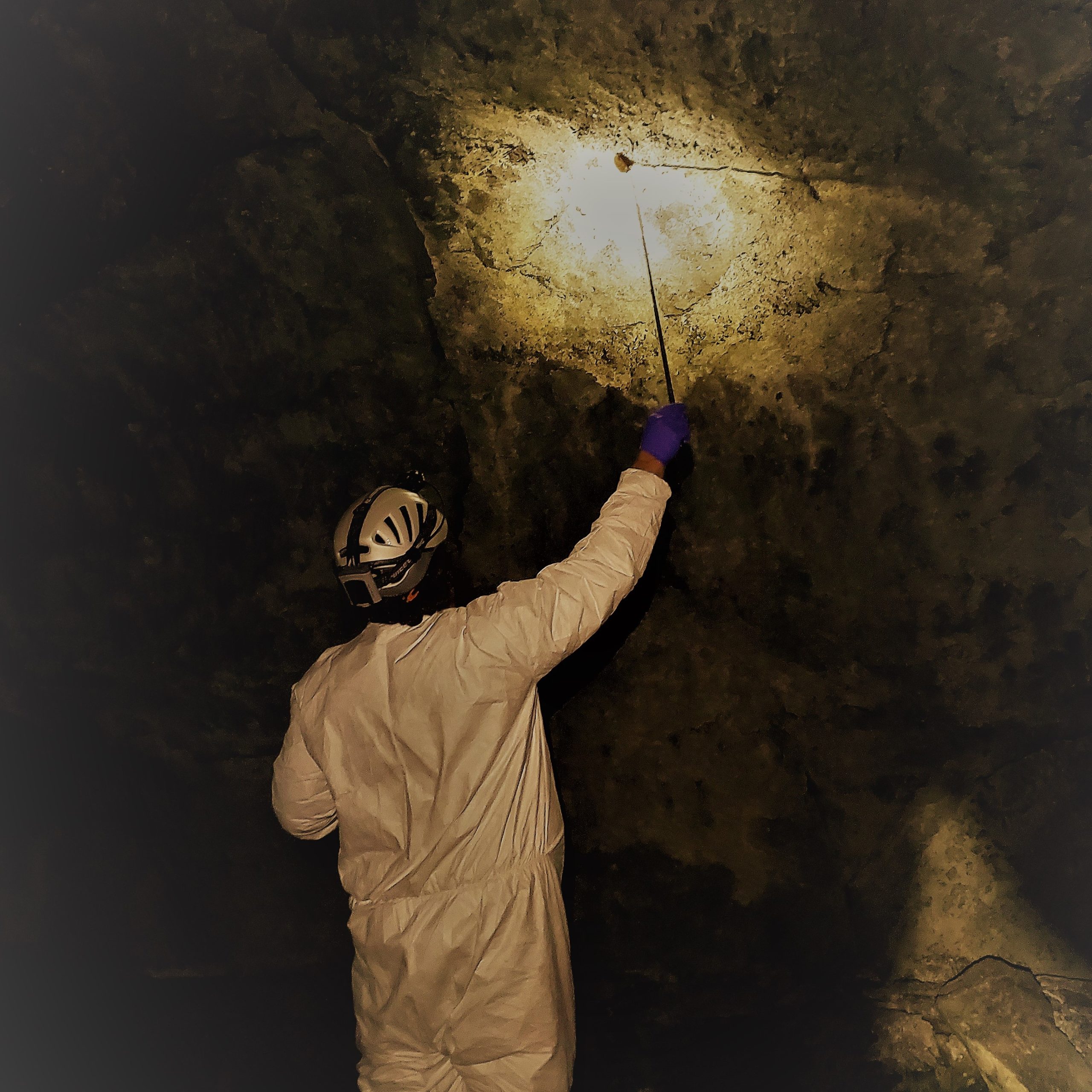White-nose syndrome is caused by a fungus, Pseudogymnoascus destructans, or Pd for short. Pd gives white-nose syndrome its name because it sometimes looks like white fuzz on the nose and other hairless parts of bats, including wings. Sometimes you can’t see the fuzz on bats that have Pd. In such cases, biologists can detect it on live bats by wiping the bat with a swab or taking a small tissue sample and bringing it back to the lab for analysis. Pd thrives in cold, damp places where bats hibernate for the winter. Pd attacks and grows on bats while they’re in an inactive state of hibernation. The fungus damages skin so much that bats warm up and become active, wasting energy they need to make it through the winter. The bats are essential to Oregon because they serve as a source of pest control for bugs out in the forest, we don’t want to see a drastic change to our ecosystem because we let the bats die out. (https://www.whitenosesyndrome.org/static-page/the-fungus )
Testing is being conducted in different caves to find out if bats in Oregon are being affected; visitors of caves are being urged to not disturb bats in caves as they are hibernating. Guidelines for cleaning and disinfecting clothes and gear are in place for those who often visit caves and other places where bats hibernate.
There are currently no positive indications that the syndrome is in Oregon, but more surveillance inspections are being conducted to make sure.
VetsWork has helped me discover how exciting it is again to work out in the field; bat testing and cave exploration is by far the best thing I’ve done at work in the past 5 years. I have become more aware of my environment and what wildlife are in danger, by going out there and making sure the bats don’t die from white nose syndrome. I know now that keeping the wildlife and forest from harm is a field that very much interests me.
Written by:


